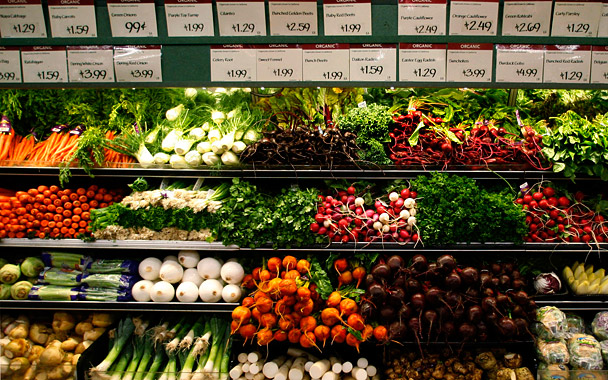Less than three months ago, advocates for organic and sustainable agriculture were up in arms. President-elect Obama had just nominated former Iowa governor Tom Vilsack to be Secretary of Agriculture. The blogosphere was humming with criticism that Vilsack was too close to Monsanto, too soft on industrial-scale feedlots, and too rooted in commodity agriculture. Obama seemed to have turned his back on a petition organized by Food Democracy Now! and signed by almost 90,000 Americans, including the luminaries of the food movement. The petition offered Obama a list of a “Sustainable Dozen” from which to select a Secretary of Agriculture. Vilsack was not on the list.
What a difference a few months make. Advocates of sustainable agriculture are now ecstatic about President Obama’s decision to appoint Kathleen Merrigan as Deputy Secretary of Agriculture, second in command. Unlike Vilsack, Merrigan was one of the “Sustainable Dozen.” She comes from the Friedman School of Nutrition Science and Policy at Tufts University, in Boston, where she is the director of the Center on Agriculture, Food and Environment. She has also worked in government, as head of the Agricultural Marketing Service at the USDA, as a consultant to the Food and Agriculture Organization at the United Nations, and as staff to the Senate Committee on Agriculture. She even worked for Texas populist Jim Hightower at the Texas Department of Agriculture in the late 1980s. She knows how things work, and she knows where power lies in the food industry. But that’s not what makes Kathleen Merrigan a provocative choice to lead the USDA.
Tom Dobbs, professor emeritus of agricultural economics at South Dakota State University, explains, “For the first time, an advocate of sustainable and organic agriculture will be in the highest-level meetings with the Secretary. She’ll be right there, at his side.”
Merrigan is widely seen as the moving force behind the development of federal organic standards, and she’s the author of the Organic Foods Production Act of 1990. She is an outspoken advocate of moving federal farm policies toward conservation and sustainable land use. Consider her academic writings:
· “Selling to the Eco-Conscious Food Shopper,” Nutrition Today, 2005
· “Organic Food Regulations: Part Art, Part Science,” Regulation of Functional Foods and Nutraceuticals: A Global Perspective, 2005
· “National Policy Options and Strategies to Encourage Sustainable Agriculture: Lessons From the 1990 Farm Bill,” American Journal of Alternative Agriculture, 1993
· “The Sustainable Agriculture Policy Agenda in the United States: Politics and Prospects,” Food for the Future: Conditions and Contradictions of Sustainability, 1993
At Tufts, Merrigan has directed a group of projects designed to stimulate community gardens, develop regional marketing strategies between consumers and local farmers, and promote food and gardening education in local schools. This is not the traditional career path of high-ranking USDA officials.
As second in command at the Department of Agriculture, Merrigan will have to navigate the minefield of agriculture trade associations and commodity farmers who have already expressed their opposition to President Obama’s determination to cut direct payment subsidies for wealthy farmers. With Merrigan’s selection, it becomes clear that Obama and Vilsack not only have a reorganization of subsidies in mind, but also intend to give voice to an alternative approach to growing food.
Traditional agriculture associations have yet to comment on Merrigan’s nomination. Senator Tom Harkin (D-Iowa), Chair of the Senate Agriculture Committee, has not yet scheduled Merrigan’s confirmation hearing.




 Pinterest
Pinterest


